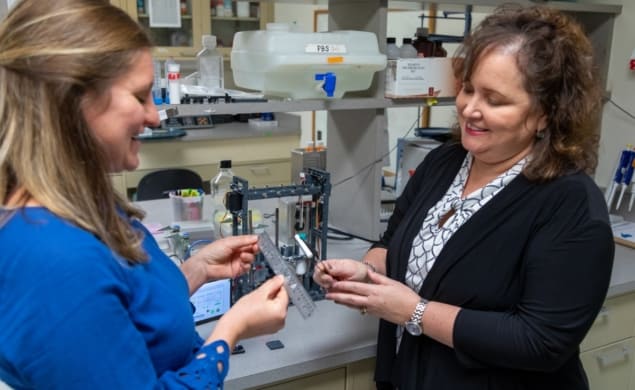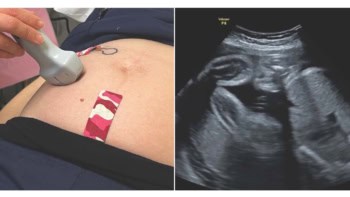
A biodegradable nerve guide embedded with growth-promoting proteins that can regenerate long sections of damaged nerves has been developed by researchers in the US. The technology, which has been tested in monkeys, could offer an alternative to nerve grafts for patients who have experienced nerve injury, and help restore their motor function and control, the team claim (Sci. Transl. Med. 10.1126/scitranslmed.aav7753).
Every year millions of people experience peripheral nerve damage, with the resulting gaps in their nerves impacting movement and daily life. In the US, trauma-related injuries to peripheral nerves account for around 5% of people entering trauma centres. In addition to traumatic accidents, nerve damage can have other causes, such as medical treatment, diabetes and birth trauma.
With assistance, nerves can regrow and be repaired across small gaps. This is limited, however, to gaps of around 8 mm. For larger injuries, the current standard treatment is to remove nerve tissue from elsewhere on the patient – often from the back of their leg – and use it to bridge the gap.
But such autografts require additional surgery, with risks of complications, to remove the donor nerve. In addition, explains Kacey Marra, an expert in tissue engineering at the University of Pittsburgh, this method of repair is not optimal “because often what you are replacing is a large motor nerve and the nerve that the surgeons primarily use is a small sensor nerve, so that is not a good match and leads to about 50–60% functional recovery”.
Looking for an alternative to autografts, Marra and her colleagues have spent more than a decade developing a biodegradable guide that releases a growth factor to stimulate nerve regrowth. Building on previous studies in rodents, the team’s latest work suggests that the conduit could be used to bridge large nerve gaps.

The guide is a hollow tube made from polycaprolactone, a biodegradable polymer used for dissolvable stitches and other biomedical applications, with microspheres embedded in its walls. These capsules slowly release a natural neurotrophic factor that aids in nerve repair.
The researchers tested the technology in macaques, removing a 5 cm section of nerve from the forearm and replacing it with their conduit. They compared this approach with autografts – where they removed and flipped around a 5 cm section of nerve – and a guide containing empty microspheres.
After a year, the recovery of the monkeys treated with the nerve guide was similar to those who received autografts, with both groups recovering around 75% of their pre-operative function – based on their ability to pinch and pick-up a sugar pellet. And the nerves repaired using the guides conducted signals faster than the autografts. Functional recovery and conduction velocity of those treated with the empty conduit was significantly lower.
The team’s aim is to produce an off-the-shelf guide that can be used to regenerate large peripheral nerve gaps. “That is the goal,” Marra explains, “that you pull it out of the refrigerator, and you cut it to the size that you need… Over time the nerve will regenerate, but the material will slowly dissolve away.”
They are now working towards their first in-human clinical trial, Marra tells Physics World.
Not everyone is convinced, however, that alternatives to autografts are needed, or that conduits are the answer. Lars Dahlin, professor and senior consultant in hand surgery at Lund University, tells Physics World that although there may sometimes be drawbacks with the use of the person’s own nerve, “basically nerve autografts are working very well across long and short defects”.
Dahlin adds that the idea of nerve guides with growth factors has been around for a while, but there are still many questions without clear answers, such as which growth factor or factors are best, what concentrations to use, and when to add the growth factors, as some are needed early and others late in the regeneration process.



